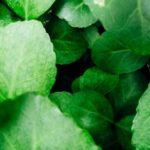Proper water drainage is essential for maintaining a healthy and beautiful landscape. In this article, we will explore landscaping ideas for water drainage to help you address common issues and create effective solutions for your yard. From assessing the topography of your landscape to choosing water-tolerant plants, we will provide practical tips for achieving both functionality and aesthetics in your outdoor space.
When it comes to landscaping, water drainage is often overlooked but plays a crucial role in preserving the health of your plants and preventing erosion. By understanding the importance of proper water drainage, you can ensure that your yard remains visually appealing and free from potential water damage.
Throughout this article, we will discuss common issues related to water drainage in landscaping, provide insights into assessing your landscape’s topography and soil composition, share best practices for effective water drainage, explore creative landscaping solutions, offer plant selection tips, delve into hardscaping options, and discuss long-term maintenance for your water drainage features. Whether you are facing soggy areas or looking to prevent runoff on slopes, these landscaping ideas will help you achieve a functional and attractive outdoor space.
Common Issues
When it comes to landscaping, proper water drainage is crucial to maintaining a healthy and functional outdoor space. One of the most common issues homeowners face is poor water drainage, which can lead to a variety of problems such as soil erosion, standing water, and even damage to your home’s foundation. Identifying these issues early on is key to preventing costly damage and ensuring the longevity of your landscape.
One common issue to look out for is pooling water in certain areas of your yard after heavy rainfall. This can be indicative of poor grading or compacted soil, both of which can impede proper water drainage. Additionally, if you notice erosion or sediment buildup in specific areas of your yard, this may also indicate that there are underlying water drainage issues that need to be addressed.
In order to properly identify water drainage problems in your yard, it’s important to conduct a thorough assessment of your landscape. This involves understanding the topography and soil composition of your yard, as well as paying attention to how water flows and accumulates during rain events. By identifying these common issues early on and taking proactive measures, you can effectively address water drainage problems before they escalate into more serious complications.
| Common Water Drainage Issues | Signs and Indicators |
|---|---|
| Pooling water | Indicative of poor grading or compacted soil |
| Erosion and sediment buildup | May indicate underlying water drainage issues |
Assessing Your Landscape
Topography Assessment
Before implementing any landscaping ideas for water drainage, it is crucial to assess the topography of your yard. Look for areas where water tends to accumulate or pool, as these are potential problem spots that need to be addressed. By identifying low-lying areas and natural slopes in your landscape, you can better plan for effective water drainage solutions.
Soil Composition Analysis
In addition to understanding the topography of your yard, it is equally important to assess the soil composition. Different types of soil can affect water drainage in various ways.
For example, clay soil tends to compact easily and retain water, while sandy soil drains quickly but may struggle to retain moisture. Conduct a simple soil percolation test by digging a hole and filling it with water to see how long it takes to drain, which will help you determine whether your soil is well-draining or not.
Professional Consultation
If you are unsure about how to properly assess the topography and soil composition of your yard, consider consulting with a professional landscaper or a local extension service. These experts can offer valuable insights into the specific challenges posed by your landscape and provide guidance on the best landscaping ideas for water drainage tailored to your unique situation. Additionally, they can also help you identify any regulatory requirements or permits necessary for implementing certain drainage solutions in your area.
Best Practices
Effective water drainage is essential for maintaining a healthy and functional landscape. Without proper drainage, your yard can become waterlogged, leading to water damage, erosion, and the growth of mold and mildew. To ensure that your landscaping remains in top condition, consider the following best practices for effective water drainage:
Grade Your Yard
One of the most important steps in ensuring good water drainage is to properly grade your yard. This involves creating a slight slope away from your home or other structures to allow water to naturally flow away from these areas. By grading your yard effectively, you can prevent standing water and potential damage to your property.
Install French Drains
French drains are an effective way to redirect excess water away from specific areas of your yard. These drains consist of perforated pipes buried in gravel-filled trenches, allowing water to filter through the gravel and into the pipes for proper drainage. Consider installing French drains in low-lying areas or near downspouts to effectively manage water runoff.
Utilize Rain Gardens
Rain gardens are not only aesthetically pleasing but also serve as effective water drainage solutions. By planting native vegetation in depressions or basins strategically placed throughout your yard, rain gardens help absorb excess rainwater while adding beauty to your landscape. Research local plant species that thrive in wet conditions to create a thriving rain garden that complements your overall landscaping design.
By implementing these best practices for effective water drainage in landscaping, you can minimize potential issues and maintain a beautiful and functional outdoor space for years to come.
Landscaping Solutions
Rain Gardens
One of the most visually pleasing ways to address water drainage issues is by creating a rain garden. These gardens are designed to collect and absorb excess water, preventing it from pooling in undesired areas of your yard. By selecting water-tolerant plants and strategically placing them in depressions or low-lying areas, you can create a beautiful garden that also serves as an effective drainage solution.
French Drains
French drains are another popular option for addressing water drainage problems in landscaping. These drains are typically made up of a trench filled with gravel or rock that allows water to filter through and disperse evenly into the soil. They can be disguised with decorative rocks or pavers to seamlessly blend in with your landscape design, making them both functional and visually appealing.
Permeable Paving
Another innovative way to incorporate water drainage features into your yard is by using permeable paving materials for walkways, patios, and driveways. These materials allow rainwater to seep through the surface and return to the ground instead of running off into other areas.
Not only do they help prevent water buildup, but they also reduce erosion and pollution by filtering out pollutants as the water passes through. This sustainable option is not only beneficial for drainage but also contributes to environmental conservation efforts.
By implementing these creative landscaping solutions for water drainage, you can effectively manage excess water on your property while enhancing its visual appeal. With careful planning and thoughtful selection of materials and plants, you can achieve a beautifully balanced landscape that’s both functional and aesthetically pleasing.
Plant Selection
Choosing the right plants for your landscape is crucial when it comes to managing water drainage effectively. By selecting water-tolerant flora, you can help prevent soil erosion, reduce runoff, and improve overall water retention in your yard. This section will provide you with some insights on the best plant selection for landscaping ideas for water drainage.
One of the main factors to consider when choosing water-tolerant plants is the ability to absorb excess moisture and withstand periodic flooding. Some examples of water-tolerant plants include varieties of ferns, irises, cattails, and certain types of ornamental grasses. These plants have adapted to thrive in moist or wet conditions, making them ideal choices for areas in your yard with poor drainage.
In addition to their resiliency in soggy soils, water-tolerant flora also offers aesthetic appeal. With a wide range of options available, you can create a visually stunning landscape while effectively managing water drainage. By incorporating these plants into your yard, you can achieve both functionality and beauty in your outdoor space.
| Water-Tolerant Plants | Description |
|---|---|
| Ferns | Known for their lush green foliage and ability to thrive in shady, wet areas. |
| Cattails | Characterized by their tall stalks and brown cylindrical flower heads; they are excellent at absorbing excess nutrients from the soil. |
| Iris | Offering a variety of colors and sizes; these perennials are perfect for adding vibrant elements to your landscape that can withstand damp conditions. |
Hardscaping Options
When it comes to addressing water drainage issues in your yard, incorporating hardscaping options can be an effective and visually appealing solution. By strategically integrating pathways, retaining walls, and gravel beds into your landscape design, you can help manage water flow and prevent erosion while adding aesthetic value to your outdoor space.
- Pathways: Installing permeable pathways made of materials such as gravel, decomposed granite, or pavers allows water to seep into the ground instead of pooling on the surface. This not only helps with drainage but also reduces runoff and erosion. Additionally, permeable pathways can create a natural and rustic look that complements various landscaping styles.
- Retaining Walls: If your yard has sloped areas that are prone to erosion due to water runoff, consider incorporating retaining walls into your landscape design. Retaining walls not only help with managing water drainage by preventing soil erosion but can also add depth and dimension to your yard. They can be constructed using a variety of materials such as stone, concrete blocks, or timber, providing both functionality and visual appeal.
- Gravel Beds: Introducing gravel beds into your landscaping can serve as an attractive way to manage water drainage. Gravel is a porous material that allows water to percolate through it, reducing surface runoff and preventing standing water. Whether used as a border for plant beds or as a decorative feature in your yard, gravel beds offer a low-maintenance solution for addressing water drainage issues.
Incorporating these hardscaping options into your landscaping design not only helps with managing water drainage but also adds depth, texture, and visual interest to your outdoor space. When done thoughtfully and creatively, these features can enhance the overall aesthetic of your yard while ensuring proper water management. By working with a professional landscaper or designer who specializes in landscaping ideas for water drainage, you can effectively address any existing issues while creating a beautiful and functional outdoor environment.
Maintenance
When it comes to landscaping ideas for water drainage, maintenance is key to ensuring the effectiveness and longevity of your water drainage solutions. Regular upkeep and long-term care are necessary to keep your landscape looking beautiful while effectively managing water flow.
One important aspect of maintaining your water drainage solutions is to regularly inspect and clean them. Over time, debris such as leaves, twigs, and dirt can accumulate in gutters, downspouts, drainage ditches, and other water management features in your landscape. Regularly clearing out this debris will ensure that water can flow through these systems unobstructed, preventing potential flooding or erosion issues.
In addition to cleaning out debris, it’s also important to inspect the condition of your water drainage features. Check for any signs of damage or wear, such as cracks in retaining walls or erosion around drainage pipes. Addressing any issues promptly can prevent more extensive damage and costly repairs down the line.
Additionally, consider incorporating a regular maintenance schedule into your landscaping routine to stay on top of upkeep tasks for your water drainage solutions. By taking these steps, you can ensure that your landscaping continues to effectively manage water flow while looking attractive year-round.
Conclusion
In conclusion, landscaping with a focus on water drainage is not only practical but also aesthetically pleasing. By understanding the importance of proper water drainage, identifying common issues, and assessing the landscape’s topography and soil composition, you can address any existing problems and prevent future ones. Implementing best practices such as grading, sloping, and using permeable materials will help to effectively manage water flow in your yard.
Furthermore, incorporating landscaping solutions like rain gardens, French drains, and bioswales can add both beauty and functionality to your outdoor space. Selecting water-tolerant plants and utilizing hardscaping options like pathways, retaining walls, and gravel beds will further enhance your overall landscape design while addressing water drainage concerns.
With regular maintenance and long-term care for your water drainage solutions, you can ensure that your landscaping remains not only visually appealing but also fully functional. By following these tips for effective water drainage in landscaping, you can achieve a beautiful yard that thrives regardless of weather conditions. Whether you’re dealing with excess rainfall or poor soil drainage, implementing these landscaping ideas for water drainage will transform your outdoor space into a true oasis.
Frequently Asked Questions
How Do You Landscape Water Drainage?
Landscaping water drainage involves creating a system that redirects excess water away from your property to prevent flooding. This can be achieved by incorporating sloped surfaces, French drains, dry creek beds, and rain gardens. These features help to manage stormwater and distribute it in a way that prevents pooling or erosion.
How Do I Divert Rain Water in My Yard?
To divert rainwater in your yard, you can incorporate various techniques such as installing gutters and downspouts to direct water away from the foundation of your home, using swales or channels to guide water towards suitable outlets, and implementing permeable paving to allow water to infiltrate into the ground instead of running off the surface.
How Do You Landscape a Backyard That Floods?
When landscaping a backyard that floods, it’s important to consider features like grading the land to create slopes away from structures, constructing retaining walls or terraces to hold back soil and prevent erosion, using native plants with deep root systems to absorb excess water, and incorporating hardscape features like permeable pavers or gravel areas that allow for better water absorption.
Additionally, creating a rain garden can provide an attractive solution for managing backyard flooding by capturing and soaking up excess water.

Welcome to my gardening blog! I am passionate about plants and enjoy sharing my knowledge and experiences with others. In this blog, I will write about everything related to gardening, from tips on how to get started to updates on my own garden projects.





